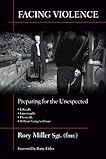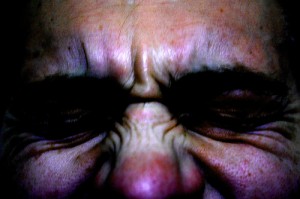
In this fifth book in the Connor Burke martial arts thriller series, John Donohue breaks some new ground. Throughout Burke’s newest adventure, Donohue weaves the story of Burke’s sensei, Yamashita, as a young man. He looks at issues of loyalty, obedience and impetuousness while telling an edge-of-your-seat story involving kidnapping and the Korean mafia. As always Donohue gives us a meaty story that can be read as a darn good thriller, or as a study in human nature, or as a commentary on the traditions and inner workings of the martial art. Pick it up on Friday night when you don’t have to be at work Saturday morning. If you’re like me, you’ll be up half the night reading “just one more chapter.”
When I was a beginning student sometimes high ranking black belts would come to the dojo to visit, teach, or train. I discovered that if you hung around after class and asked a few leading questions, sometimes the visiting black belt would open a new world to you: stories about his teachers or about masters now gone, techniques for strengthening a particular part of the body, martial philosophy and psychology, new ways of looking at old techniques, or challenges to think about and test yourself against. Shin Gi Tai: Karate Training for Body, Mind, and Spirit is like having Michael Clarke visit the dojo and drop all these things and more in your lap. It is an eclectic book containing everything from training techniques to history, background on why karate-ka do what they do to commentary on modern trends in the martial arts. Mostly it is a chance to hang out with a senior martial artist and to listen to him talk about the many-facets world of karate. I will be mulling over his insights for months to come.
If you are interested in how to train safely in the sun, I’ve just written an article for YMAA on sunburn prevention and herbal treatment. You’ll find it here.
 Facing Violence: Preparing for the Unexpected by Rory Miller
Facing Violence: Preparing for the Unexpected by Rory Miller
My rating: 5 of 5 stars
If you teach martial arts or self defense, especially if you teach young men, you must read Facing Violence: Preparing for the Unexpected. It covers the dynamics of violence, both violence perpetrated by social predators and violence that stems from social posturing and dominance behavior (the “monkey dance”).
As an author, I have a lot of respect for Sgt. Miller’s writing abilities. The book is nicely structured and tightly written. The style matches the content perfectly–clear, straightforward, no-nonsense. As a martial artist who hasn’t been in the trenches, I am grateful for his insights and examples. Sgt. Miller, as a protector of society, has seen it all. Because he has seen it all and has thoroughly processed it for himself, he is able to describe it to us members of society who sincerely hope we never see any of it. I have read a several books of its kind, and this one is hands-down the best. He has written an emergency book–what do do when faced with real-world violence–that will undoubtedly save lives.
As an aside, I have a request for his next book: facing domestic violence. This book addresses predator violence and dominance behavior violence. It’s outstanding in the way it addresses the kind of violence men (and some women) face. Next, I’d like to see Miller’s take on male-female violence, particularly between intimates.
We in the external martial arts come up through the ranks with the importance of effort imprinted on both on our minds and our bodies. Maintaining effort despite pain is the ability to “eat bitter” in the pursuit of excellence. In maintaining effort we drive into our very flesh the notion that the world contains things more valuable than any one individual’s personal comfort. It’s a valuable lesson for both the martial arts and life.
 To eat bitter we must first get used to the idea that the pain of training is not an enemy. I teach my students that there are at least three kinds of pain: You’re-getting-stronger” pain is the pain that comes when you take a body outside its comfort zone while remaining inside the safety zone. Warning pain is the pain that the body gives us just before breaking. And that-just-the-way-it-is pain is old pain that we can’t get rid of, but that’s probably not going to hurt us. Anyone over 40, and probably a lot of folk younger than that, know that kind of pain well. Part of successful martial arts training is learning to distinguish between the three.
To eat bitter we must first get used to the idea that the pain of training is not an enemy. I teach my students that there are at least three kinds of pain: You’re-getting-stronger” pain is the pain that comes when you take a body outside its comfort zone while remaining inside the safety zone. Warning pain is the pain that the body gives us just before breaking. And that-just-the-way-it-is pain is old pain that we can’t get rid of, but that’s probably not going to hurt us. Anyone over 40, and probably a lot of folk younger than that, know that kind of pain well. Part of successful martial arts training is learning to distinguish between the three.
So how much pain is good? That’s a very difficult question. One thing is true: if you train until you break, you won’t be able to train at full potential until you heal. Breaking yourself repeatedly is counterproductive if what you want is to improve steadily.
But if you shy away from all pain, you will never find those hidden resources we all have to take us through emergencies. You will never know what you are capable of out on the outer edges of your abilities. You will doubt your ability to endure, and part of enduring well is trusting your ability to do just that.
As martial artists we toy with our limits. We toy with anger and aggression. We toy with pain. We do it because the dojo is our laboratory, and we are our own lab rats. In the Art of War, Sun Tzu said, “It is said that if you know your enemies and know yourself, you will not be imperiled in a hundred battles; if you do not know your enemies but do know yourself, you will win one and lose one; if you do not know your enemies nor yourself, you will be imperiled in every single battle.” We play with pain to learn who we are when our higher brain is just too tired or too ticked off to be of any use to us anymore.
But once again, when does pain become counterproductive? I think there are a few principles that will keep us from abusing pain:
1. If you are a teacher and you are asking your students for painful effort, you need to know exactly where your ego is and what it’s up to. In my training I’ve been humiliated and hurt by small men who enjoyed hurting people who were not likely to talk back to them because of a shared code. I vowed never to do that to my students. If you are a teacher and you do not hurt when your students are hurting, you have a problem. If you wouldn’t rather be out on the deck sweating and straining rather than turning the screws, you have no place turning the screws.
2. Levels of training are different from levels of testing. The internal arts say that a good everyday level of training is seventy percent of one’s maximum (assuming that 101% is the point where the body breaks). As I understand it, this advice is rooted in the Taoist notion of moderation. Seventy percent allows you to stay inside the safety zone reliably. Your body knows it’s safe, so it doesn’t tense up, doesn’t release all kinds of fight-or-flight chemicals that are counter-productive for learning. You are putting a little stress on the system, so it continues to grow, but you don’t have to constantly regroup after one depleting workout after another. The older I get, the more I appreciate the wisdom of this guideline. But we don’t fight at 70%. We don’t respond to emergencies at 70%. If we aren’t familiar with the territory up around 100%, we don’t know what we are capable of. Sometimes we have to push the needle into the red zone.
3. Confidence comes from experience, and experience sometimes comes with pain. Avoiding pain or sparing our students pain is robbing ourselves and them of confidence.
4. If you push yourself into pain, pay attention. Know where your ego is. Make your choice to stay with or avoid pain with your will, not your ego. You ego is a lousy judge of your abilities.
5. Driving yourself through pain mindlessly is like sleeping through a lecture. Pain has a lot to teach up about our bodies and our emotions. But we’re not likely to learn if we don’t pay attention.
All that being said, pain and hard training have a logic all their own, a logic that defies over-thinkers like me to attach words to it. The lessons learned in the school of eating bitter don’t lend themselves to words. I think it was Mike Tyson who said “Everybody’s got plans. . . until they get hit.” Everyone has opinions about the appropriate level of pain in training. . . until the pain starts. The part of you that goes to school at that point is not the part of you that’s reading this article.
photo courtesy of FatMandy
